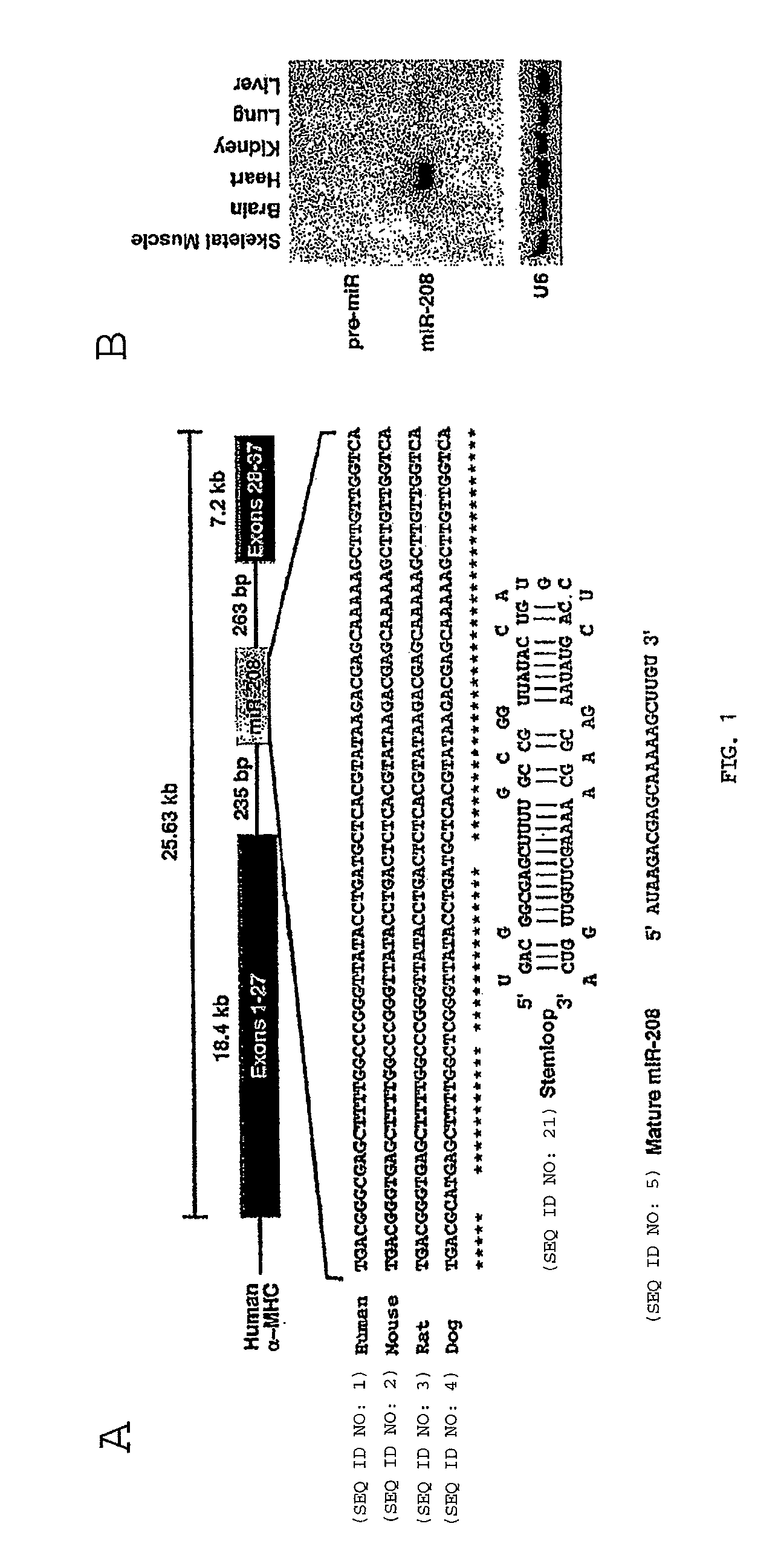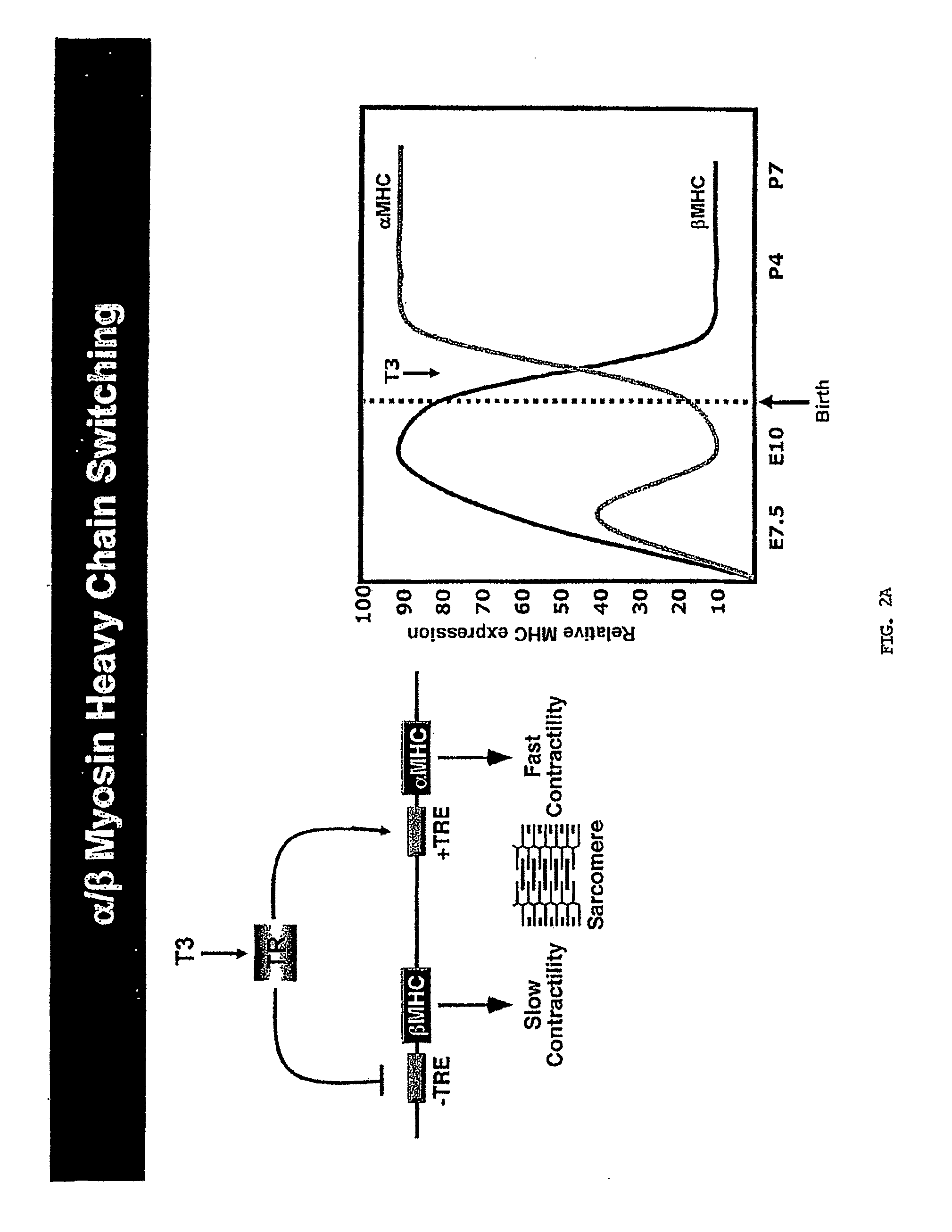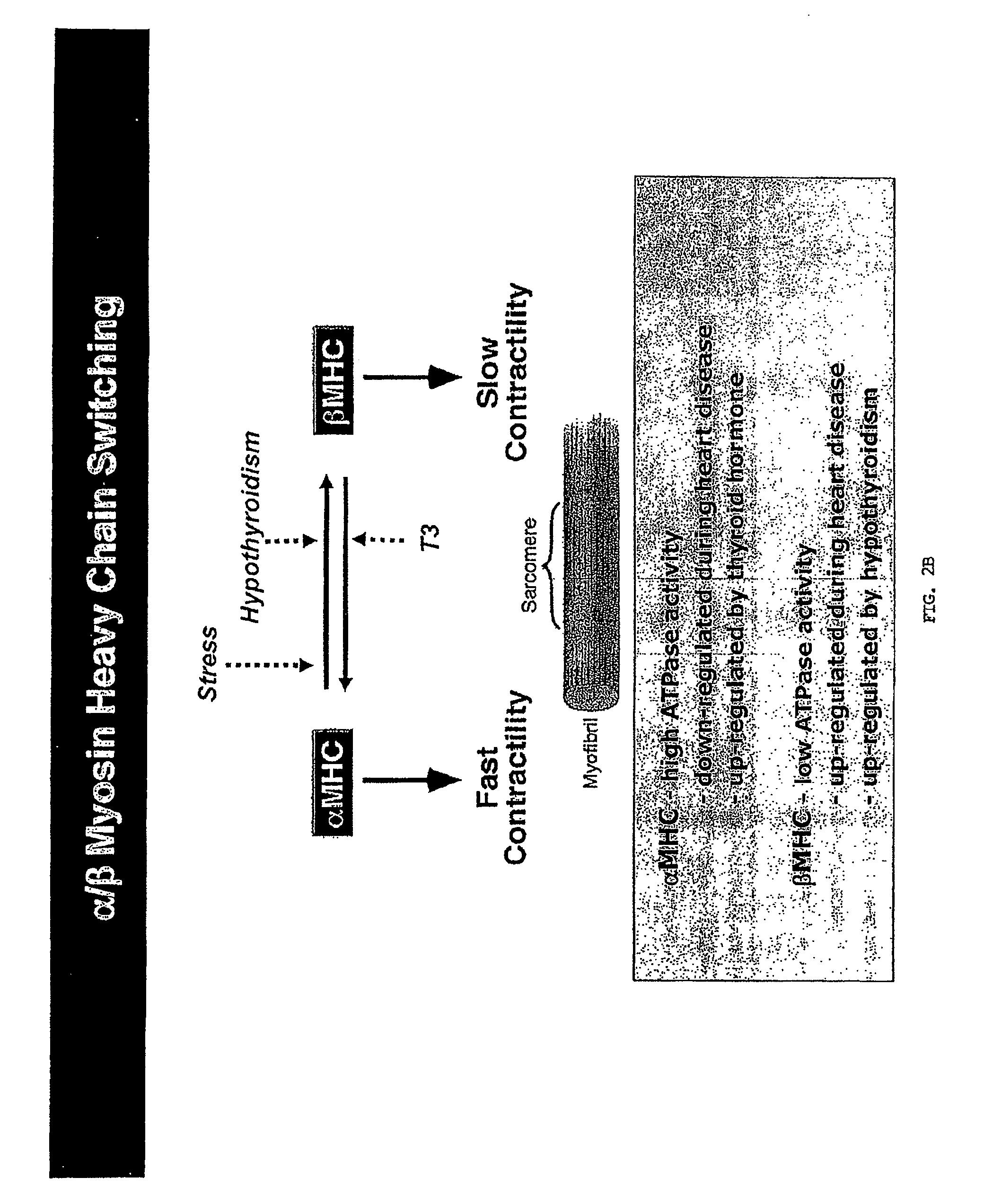Micro-RNA family that modulates fibrosis and uses thereof
a micro-rna and fibroblast technology, applied in the field of development biology and molecular biology, can solve the problems of diastolic dysfunction, high cost to diagnose, treat and support patients suffering from these diseases, and a major health risk, so as to promote the expression or activity of mir-29a-c, prevent pathologic hypertrophy, and promote expression or activity.
- Summary
- Abstract
- Description
- Claims
- Application Information
AI Technical Summary
Benefits of technology
Problems solved by technology
Method used
Image
Examples
example 1
Regulation of Cardiac Hypertrophy and Heart Failure by Stress-Responsive miRNAs
[0278]In light of their involvement in modulating cellular phenotypes, the inventors hypothesized that miRNAs may play a role in regulating the response of the heart to cardiac stress, which is known to result in transcriptional and translational changes in gene expression. To investigate the potential involvement of miRNAs in cardiac hypertrophy, they performed a side-by-side miRNA microarray analysis in 2 established mouse models of cardiac hypertrophy, using a microarray that represented 186 different miRNAs (Babak et al., 2004). Mice that were subjected to thoracic aortic banding (TAB), which induces hypertrophy by increased afterload on the heart (Hill et al., 2000), were compared to sham operated animals. In a second model, transgenic mice expressing activated calcineurin (CnA) in the heart, which results in a severe, well-characterized form of hypertrophy (Molkentin et al., 1998), were compared to ...
example 2
Discovery of the miR-29 Family as Down-Stream Targets for Regulation by miR-208
[0280]The inventors performed a miRNA microarray on hearts from wild-type and miR-208-null mice in an effort to identify downstream miRNAs that might mediate the actions of miR-208 (FIG. 16). They discovered that multiple members of the miR-29 family were up-regulated in miR-208-null mice (FIG. 17). Target prediction indicated that miR-29 family members targeted mRNAs encoding multiple collagens and other components of the extracellular matrix (FIG. 18). Thus, the up-regulation of miR-29 family members in miR-208-null mice is likely to account for the block to fibrosis seen in these animals (FIG. 19).
[0281]The discovery that miR-29a-c is down-regulated in the diseased heart and targets mRNAs encoding collagens and extracellular matrix proteins suggests that strategies to enhance expression of miR-29a-c or its association with target mRNAs can have beneficial effects on the heart in the settings of patholo...
example 3
MiR-29a-c Regulates the Expression of Fibrotic Genes
[0282]To begin to define the possible functions for miR-29a-c in the heart following MI, the inventors made use of computational predictions to identify possible miR-29a-c targets. The Targetscan prediction website indicated an unexpectedly high number of fibrosis-related mRNAs encoding collagens, metallopeptidases, and integrins as possible targets for miR-29a-c (word-wide web at targetscan.org). To determine whether the downregulation of miR-29a-c might regulate cardiac fibrosis, the inventors focused on predicted targets implicated in ECM production in heart. Elastin (ELN), fibrillin 1 (FBN1), collagen type I, α1 and α2 (COL1A1, COL1A2) and collagen type III, α1 (COL3A1) all contain one or more conserved potential seed sequences for miR-29a-c (FIG. 20A).
[0283]Because miRNAs down-regulate the steady state levels, as well as the translation, of their target mRNAs, the inventors analyzed the expression of predicted miR-29a-c mRNA t...
PUM
| Property | Measurement | Unit |
|---|---|---|
| delay time | aaaaa | aaaaa |
| delay time | aaaaa | aaaaa |
| delay time | aaaaa | aaaaa |
Abstract
Description
Claims
Application Information
 Login to View More
Login to View More - R&D
- Intellectual Property
- Life Sciences
- Materials
- Tech Scout
- Unparalleled Data Quality
- Higher Quality Content
- 60% Fewer Hallucinations
Browse by: Latest US Patents, China's latest patents, Technical Efficacy Thesaurus, Application Domain, Technology Topic, Popular Technical Reports.
© 2025 PatSnap. All rights reserved.Legal|Privacy policy|Modern Slavery Act Transparency Statement|Sitemap|About US| Contact US: help@patsnap.com



